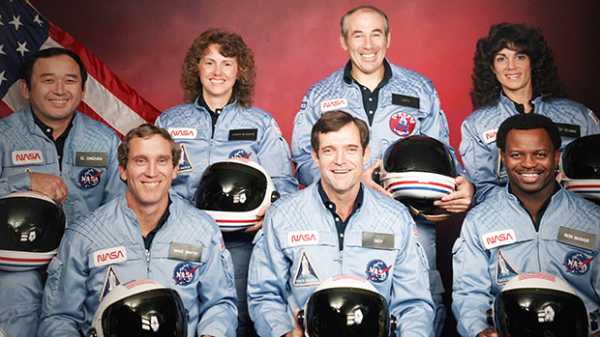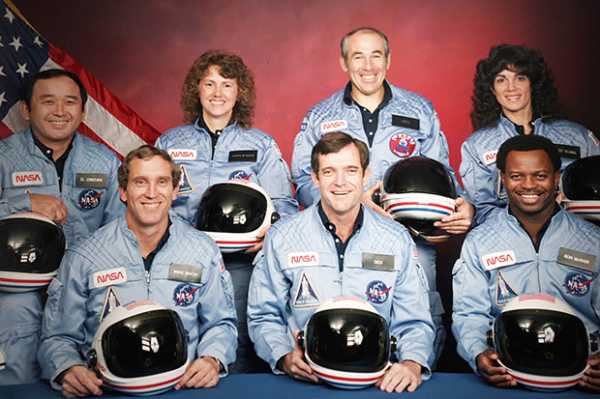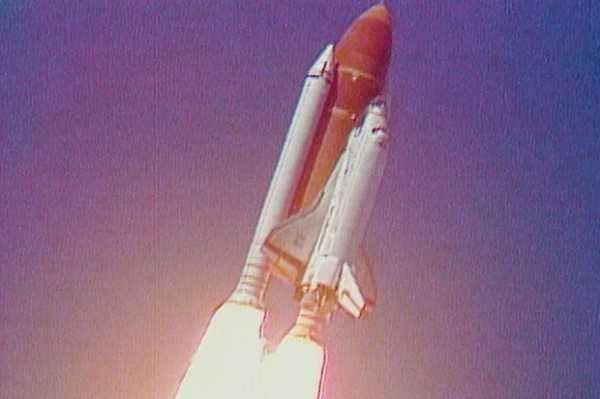
The new Netflix docuseries, ‘Challenger: The Final Flight,’ explores the 1986 Challenger space shuttle that broke apart less than 2 minutes after launch. The 1986 disaster remains one of America’s most devastating tragedies.
Challenger: The Final Flight is a 4-part docuseries that premieres on Netflix on Sept. 16. The docuseries examines the 1986 Challenger space shuttle tragedy and gives an in-depth look at the incredible crew and mechanical failures that led to the disaster. The Challenger space shuttle tragedy, which occurred Jan. 28, 1986, changed the world and NASA forever. HollywoodLife is taking a look back at one of the most tragic events in U.S. history.
1. The Challenger space shuttle blew apart just 73 seconds after launch. Americans all over the country were watching as the Challenger space shuttle launched on Jan. 28, 1986. Shortly after liftoff, a plume of gray smoke could be seen on the right solid rocket booster. One of the O-rings on the solid rocket booster had failed to fully seal, and hot gas began to pour through the leak. At 73 seconds post-liftoff, the fuel tank collapsed and broke apart, according to History.com. When the fuel tank ruptured, liquid oxygen and hydrogen created a massive fireball that enveloped the shuttle. All 7 astronauts — Challenger commander Dick Scobee, pilot Michael Smith, mission specialists Judy Resnik, Ronald McNair, and Ellison Onizuka, payload specialist Gregory Jarvis, and Christa McAuliffe, who was supposed to be the first teacher in space — died as a result of the disaster.

The Challenger flight crew: The Challenger 7 flight crew: Ellison S. Onizuka, Mike Smith, Christa McAuliffe, Dick Scobee, Gregory Jarvis, Judith Resnik, and Ronald McNair. (Public Domain/NASA)
2. The 1986 launch was going to take the first private citizen into space. Christa was the first to be chosen for the NASA Teacher in Space Project and would have been the first teacher in space. She was planning to teach lessons and conduct experiments while onboard the Challenger.
3. Engineers had warned NASA about the dangers of launching the Challenger the day before the tragedy. The night before liftoff, engineers at Morton Thiokol, which was in charge of building the rocket boosters for NASA, were worried about the launch because of the cold temperatures that were predicted for Jan. 28. Allan McDonald and other engineers were concerned about the O-rings, the circular pieces of rubber that seal the rocket booster together so gases can’t escape. Allan and his team at Morton Thiokol recommended delaying the space shuttle launch until the weather got warmer because the rubber in colder temperature can harden and lose its seal.

The Challenger space shuttle tragedy occurred less than 2 minutes after liftoff. (Public Domain/NASA)
NASA didn’t take the advice. “A program manager for NASA said, ‘My God, Thiokol, when do you want me to launch, next April? We can’t be making new launch criteria the day before launch,’” Allan recalled when talking to the Los Angeles Times. Allan refused to sign off on the launch recommendation report, but his boss did. “NASA finally said, ‘Al, we’ll pass this on in an advisory capacity,’” Allan continued. “And I said, ‘Let me tell you something. I sure hope nothing happens tomorrow, but if it does, I am not going to be the person to stand in front of a board of inquiry and explain why I gave you permission to fly my rocket boosters in an environment I knew they would never qualify to fly in.’” The Challenger space shuttle tragedy was attributed to an O-ring failure.
4. The crew cabin fell into the Atlantic Ocean. After the initial breakup of the space shuttle, the crew cabin ascended to an altitude of a little over 12 miles before it started free-falling into the Atlantic Ocean off the coast of Cape Canaveral, Florida. While it’s possible the Challenger crew survived the initial breakup of the shuttle, it could never be confirmed. The crew cabin hit the ocean’s surface at more than 200 mph nearly 3 minutes after the shuttle disintegrated.

Onlookers watched as the Challenger space shuttle disintegrated before their eyes. (Public Domain/NASA)
5. Recovery operations took months. Upon the Challenger disaster in Jan. 1986, recovery operations went into immediate effect. Over the course of 12 weeks, those involved searched for remains and pieces of the Challenger. The wreckage of the crew compartment was discovered on March 7, 1986. “Federal investigators studying the wreckage believe the crew compartment fell intact nearly nine miles to the surface of the sea, where it shattered on impact,” the New York Times reported in April 1986. NASA announced on April 20, 1986, that the remains of all 7 Challenger astronauts had been recovered, following the discovery of Greg Jarvis’ remains. NASA also said it had finished its recovery operations to retrieve the wreckage of the Challenger’s crew compartment.
Sourse: hollywoodlife.com







